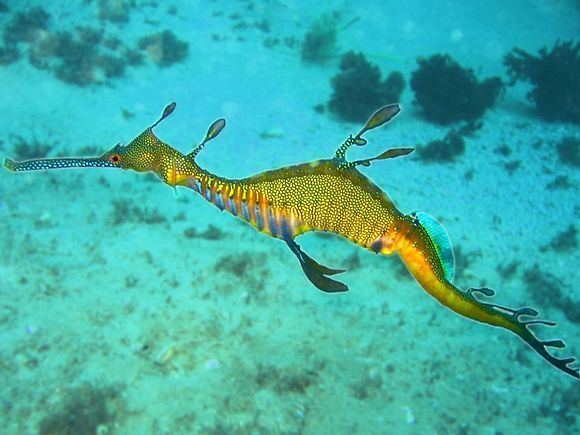Superclass Osteichthyes Infraclass Teleostei Scientific name Syngnathiformes Rank Order | Phylum Chordata Subclass Neopterygii | |
 | ||
Lower classifications Seahorse, Syngnathidae, Pipefish, Cornetfish, Aulostomidae | ||
Seahorse
The Syngnathiformes are an order of ray-finned fishes that includes the pipefishes and seahorses.
Contents
These fishes have elongated, narrow, bodies surrounded by a series of bony rings, and small, tubular mouths. Several groups live among seaweed and swim with their bodies aligned vertically, to blend in with the stems.

The name Syngnathiformes means "conjoined-jaws". It is derived from Ancient Greek syn (συν, "together") + gnathos (γνάθος, "jaw"). The ending for fish orders "-formes" is derived from Latin and indicates "of similar form".

Systematics and taxonomy

In some models, these fishes are placed as the suborder Syngnathoidei of the order Gasterosteiformes together with the sticklebacks and their relatives. Better supported by the evidence now available is the traditional belief that they are better considered separate orders, and indeed among the Acanthopterygii, they might not be particularly close relatives at all.

In addition, the armoured stickleback (Indostomidae) and the Pegasidae (dragonfishes and sea moths) are variously placed with the pipefish or the stickleback lineage. While the placement in Syngnathiformes seems to be correct for the latter, the former is possibly an actinopterygian order of its own. Following the convention of the major fish classification organizations (Fish Base, ITIS, Encyclopedia of Life), the Indostomidae are currently placed in the Gasterosteiformes.
Morphological traits uniting the flying gurnards (Dactylopteridae) and the Syngnathiformes have long been noted. Most authors, however, placed them with the Scorpaeniformes. However, DNA sequence data quite consistently support the belief that the latter are paraphyletic with the Gasterosteiformes sensu lato. As it seems, flying gurnards are particularly close to Aulostomidae and Fistulariidae, and probably should be included with these.
A tentative list of the families in the phylogenetic sequence can be given as:
